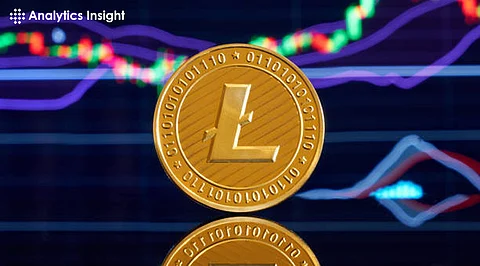

Can a cryptocurrency balance speed, affordability, and innovation while complementing the industry giant Bitcoin? Litecoin, often called the "digital silver" to Bitcoin's "gold," has carved its niche in the crypto world by offering faster transactions, lower fees, and a scalable ecosystem. Launched in 2011, Litecoin stands as both a functional payment solution and a testing ground for blockchain advancements, proving its relevance in a rapidly evolving market. Let’s dive into what makes Litecoin a vital player in the cryptocurrency space.
Charlie Lee, a former Google engineer, founded Litecoin with a clear intention of improving on Bitcoin’s core strengths while resolving some of its shortcomings. Keeping the fundamental architecture intact, he thus bifurcated Bitcoin’s open-source code to add modifications increasing its efficiency. Bitcoin’s devs went with 10-minute intervals, which was reduced by Litecoin’s devs to approximately 2.5 minutes. This benefit seemed appealing to adopters and found that this change enabled faster transaction confirmations.
Moreover, Lee also selected a new hashing algorithm (called Scrypt) instead of Bitcoin's SHA-256. This initially brought down the barrier to entry for miners, which made it more inclusive for mining. Specialized hardware later came for Litecoin mining, but the spirit of wider participation lives on. Litecoin’s community has stood behind the original promise of speed and functionality.
However, the faster block times on Litecoin make it well endowed to process transactions at a faster pace, making it ideal for daily payments or frequent transfers. This attribute offers the reason why some merchants accept Litecoin as a payment mode. Its popularity is also due to lower transaction fees, which makes the network congested at times making the fees go up on Bitcoin. Litecoin is often used by traders seeking quick settlements owing to its stable liquidity and ease of conversion into other cryptocurrencies.
Litecoin’s adaptable blockchain has been utilized by developers to roll out innovations that are later moved to Bitcoin. For example, SegWit first appeared on the Litecoin network before Bitcoin implemented the same protocol. Like Litecoin, the Lightning Network, designed to facilitate off-chain transactions at near in instant speeds also came to Litecoin at an early stage of its lifecycle. All of these technological upgrades position Litecoin as a kind of research and development space when it comes to blockchain upgrades, that do not disappear as the crypto ecosystem grows rapidly.
Trades at approximately $103,042 (as of January 2025).
Market capitalization exceeds $1 trillion, affirming its role as "digital gold."
Primarily viewed as a store of value and long-term investment.
2. Litecoin (LTC):
Priced around $118.44, with a market cap of roughly $8 billion.
Known for faster transaction times (2.5 minutes) and lower transaction fees, making it ideal for day-to-day use.
Utilizes the Scrypt algorithm, ensuring a more accessible mining process compared to Bitcoin.
Growing interest in a spot Litecoin ETF, which could enhance its adoption and investment appeal.
Continued use as a testing ground for blockchain innovations, including the early adoption of SegWit and the Lightning Network.
While Bitcoin dominates as a store of value, Litecoin retains its "digital silver" status by offering practicality and efficiency.
While Bitcoin dominates as a store of value, Litecoin retains its "digital silver" status by offering practicality and efficiency.
Serves as a complementary asset in the crypto ecosystem, appealing to traders and users seeking affordability and speed.
By Jan 2025, Litecoin was ranked among the top 20 digital currencies by market capitalization and estimated its valuation at around 6.5 billion USD. With a daily trading volume of over 800 million USD, this indicates persisting worldwide demand. According to recent price estimates, Litecoin trades for nearly 90 USD per coin, with peaks of above 400 USD in high market cycles. It doesn’t always attract the very risk-averse — or the very risk-taking ones — but a lot of risk-tolerant traders will come here looking for potential gains or strategic diversification.
Litecoin is listed in many cryptocurrency exchanges around the world, so it’s quite accessible. Having this presence in this market makes it easy for investors to have either short-term trading or long-term investments in Litecoin. The second, however, is an increasing number of online retailers accepting Litecoin as a payment option, driving down the speculative trading nature of Litecoin. Some financial analysts have even talked about institutional investment in Litecoin rising if the digital currency sector receives more regulatory clarification.
The future of Litecoin will depend on technological evolution and macroeconomic forces. But, as competition emerges, developers remain committed to perfecting the network’s speed, scalability, and security, keeping Litecoin competitive. Even as regulators around the globe work to create placeholding frameworks for digital assets, they also are influencing investor confidence as well as the degree to which traditional financial institutions accept digital assets. Litecoin’s future is also very much tied up in market sentiment. A price appreciation of Litecoin has historically been rapid during periods of bullish enthusiasm. Beyond this, bearish market phases can fade trading interest and total demand. Yet, Litecoin’s resiliency across several market cycles speaks to a strong community that supports it. The real-world use cases and community loyalty might be what stabilizes Litecoin as we know it when crypto markets fluctuate.
